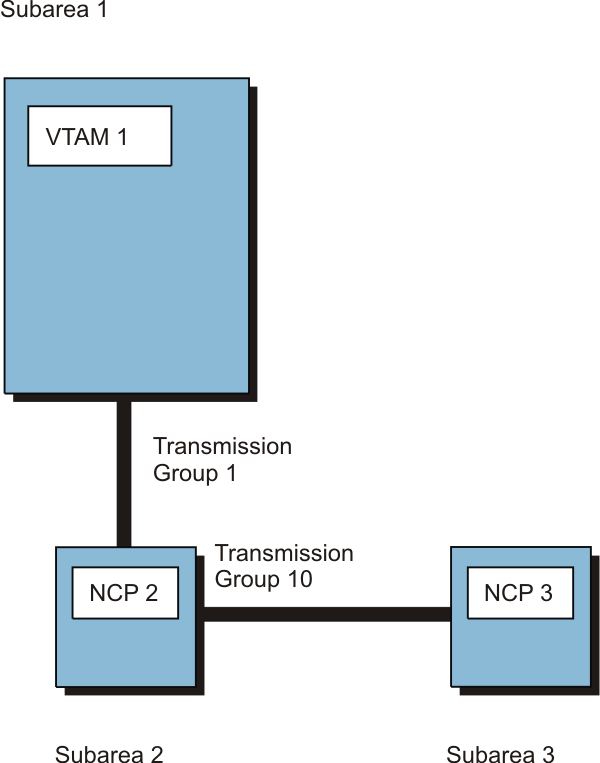 z/OS Communications Server: SNA Network Implementation Guide
z/OS Communications Server: SNA Network Implementation Guide
 z/OS Communications Server: SNA Network Implementation Guide
z/OS Communications Server: SNA Network Implementation Guide
|
Previous topic |
Next topic |
Contents |
Contact z/OS |
Library |
PDF
Dynamic path update z/OS Communications Server: SNA Network Implementation Guide SC27-3672-01 |
|
|
Dynamic path update enables the VTAM® operator to add NCP path definitions dynamically without regenerating and reloading the NCP. Using the same operator facilities, you can also dynamically add VTAM path definitions. The explicit route definitions in VTAM and NCP can be replaced or deleted only if the explicit route is inoperative (a status of INOP). Note: If you are not attempting to modify an ER mapping to a TG, the
ER state is not checked and the ER can be either operative or inoperative.
Dynamic path update can also be used to change inactive (a status of INACT) or undefined VRs, path definition values for virtual route pacing window size on inoperative routes, and transmission group thresholds on operative routes. To use dynamic path update, at least one route must be defined and operative to establish the necessary SSCP-PU session between VTAM and each NCP. The dynamic path update changes are transmitted to NCP on this session. Dynamic path update members are filed in the VTAM definition library. A dynamic path update member can contain path specifications that are added, replaced, or deleted from one or more NCP or VTAM subareas. A set of path update specifications that is targeted to a specific subarea node within a dynamic path update member is called a dynamic path specification set. A dynamic path update member can contain one or more dynamic path specification sets. The dynamic path update member in the following sample can be used
to add NCP3 to the network shown in Figure 1.
Figure 1. Sample single-domain network
 Note that the name on the NCPPATH definition statement identifies the NCP for which the PATH statements are to be processed. A dynamic path update can be triggered by any of the following
methods:
Note: Because dynamic path update changes do not alter VTAM or the NCP load module, you should use
a method that ensures that these changes are reinstated if VTAM is restarted or if NCP is
reloaded.
The dynamic path update member in the preceding example could be filed in the VTAM1 definition library. When the operator activates the dynamic path update member, VTAM1 identifies the dynamic path update member because the name in the VPATH definition statement matches its SSCPNAME (VTAM1). VTAM1 transmits the dynamic path update member to NCP2 using the active session path (SSCP-PU session). Note: You should file the dynamic path update member for each subarea
in separate dynamic path update members to avoid possible performance
deterioration.
The following restrictions are placed on coding dynamic path update
members and dynamic path specification sets:
VTAM saves the name of the dynamic path update member in the NODELST data set (the VTAM configuration restart data set). The actual dynamic path specification sets are not saved in a VSAM configuration restart file. Note: Extreme caution must be used when deleting or replacing a route
for a node that is an intermediate routing node for other routes.
The NCPPATH definition statement identifies the NCP and the network to which the dynamic path update member applies in a dynamic path update member. 


|
 Copyright IBM Corporation 1990, 2014 Copyright IBM Corporation 1990, 2014 |